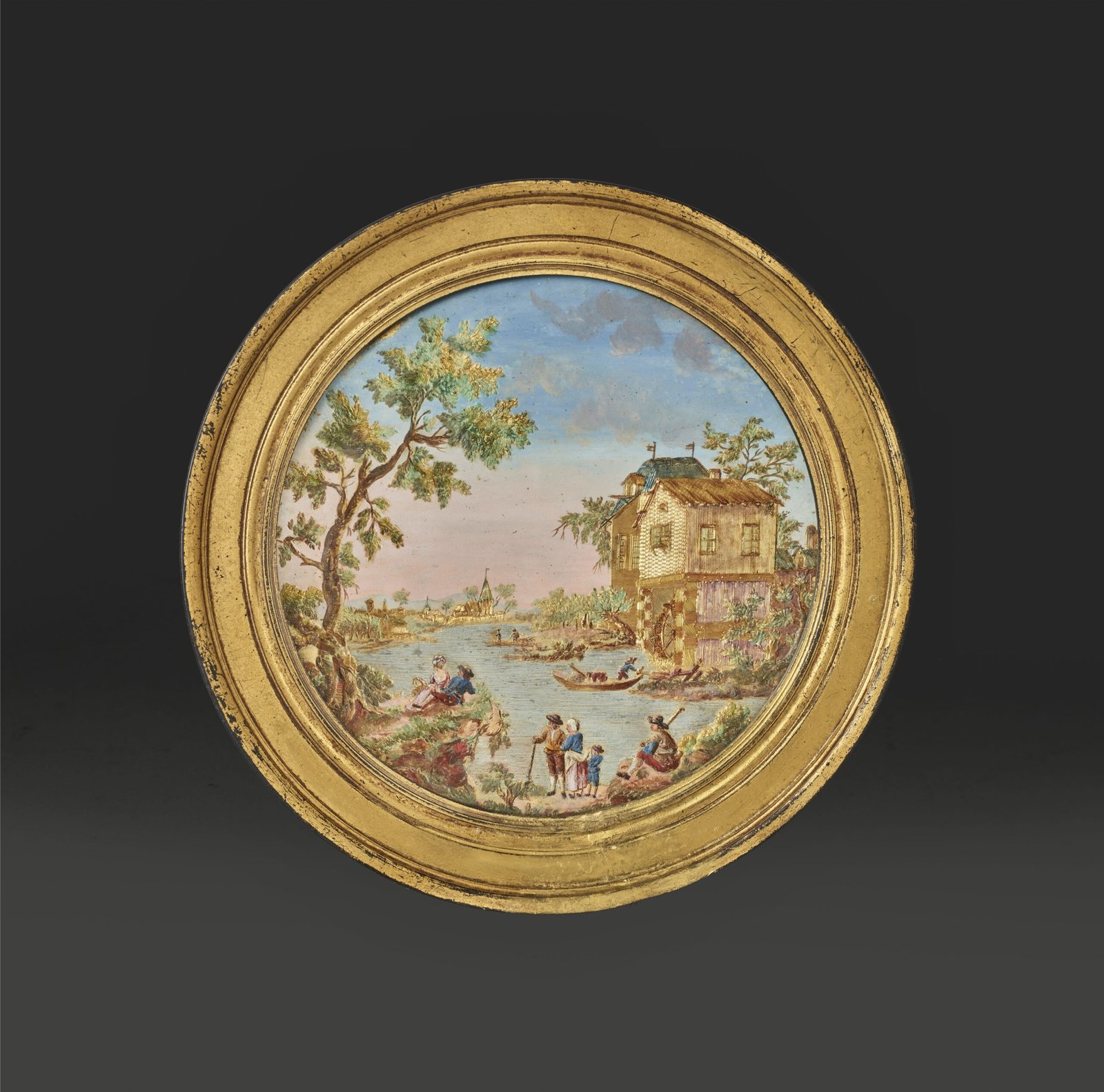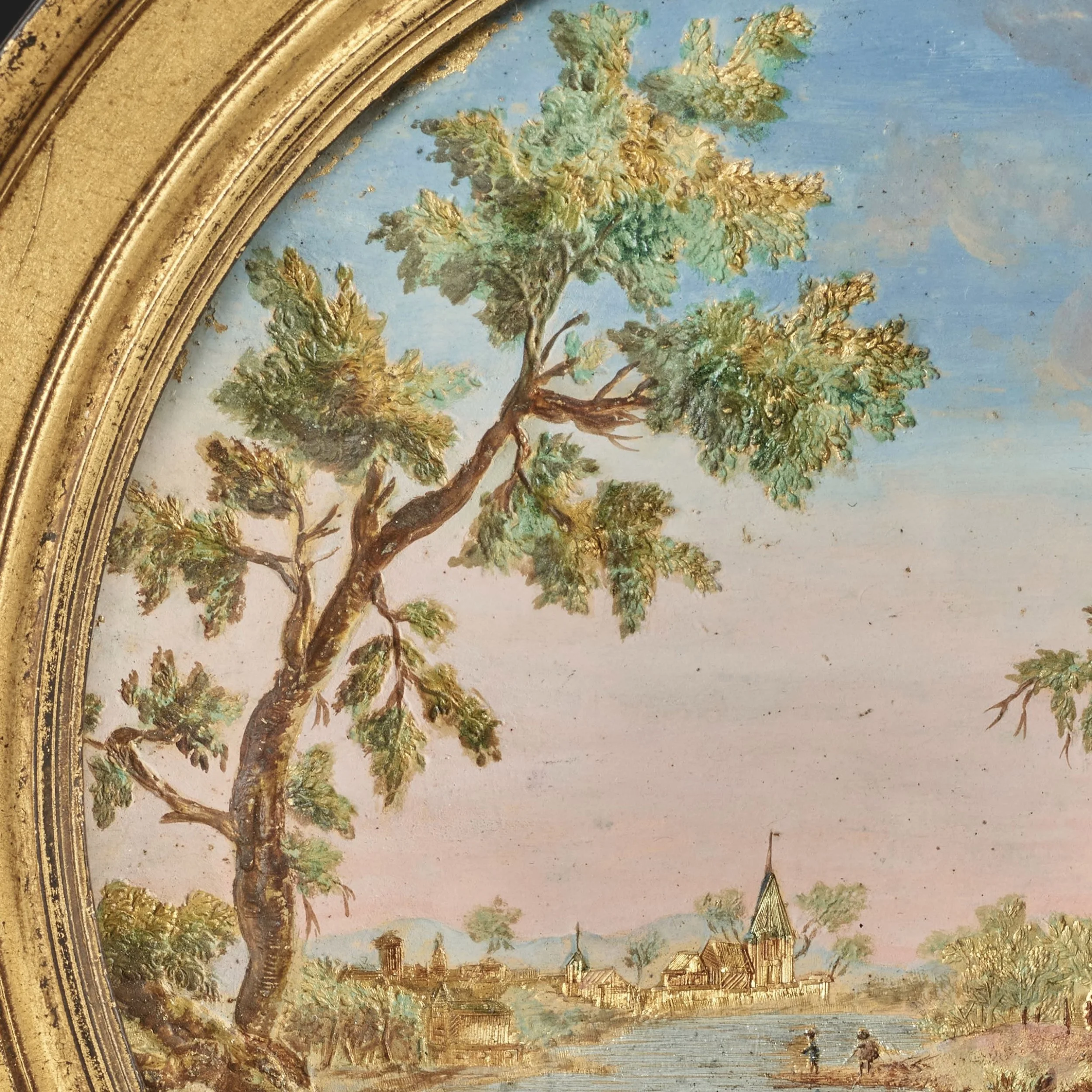Medaillon in Compigné representing a river dominated by a paddlewheel mill
- Description
- Histoire
France, second half of the 18th century
Attributed to Thomas Compigné
Pewter, gold, silver, gouache, colored varnishes
Diameter: 17,2 cm – 6 5⁄8 inches
Diameter (with frame): 17,8 cm – 7 inches
Paintings in Compigné
Of great preciousity and variety of materials, the paintings in Compigné were made according to a mysterious process starting from a sheet of tortoiseshell or carboard paper to which a pewter or gold leaf was applied. The surface could then be decorated with gold, silver, gouache and coloured varnishes. These “miniatures”, known today under the name of Compigné, had a great success in the 1760s.The small format, characteristic of this production, required to work in extreme precision, probably with the help of a magnifying glass, to develop the perfection of these technical details and colours.
Thomas Compigné
Arrived from Italy, probably around 1750, Thomas Compigni took the name Compigné when he settled under the sign of “Roi David”, Rue Greneta, in Paris. As an ivory turner, he specialised in the manufacture and sale of boxes, knitting sets, draughts and chess sets, snuffboxes and other cane handles of blond tortoiseshell inlaid with gold. Renowned for the quality of his objects, he passed on to posterity through the production of precious paintings whose technique remains mysterious today. In 1773, he presented two views of the Château de Saint-Hubert to the King and obtained the title of “tabletier privilégié du Roi” under Louis xv and Louis xvi. His preferred themes are most often views of towns, monuments and castles from the perspective of parks or landscapes animated by small characters.
Bibliography :
- Plaisir de France, « Les Compignés et leurs créateurs, ces délicats chefs‑d’œuvre de la tabletterie au xviiie siècle », n° 427, March 1975.
- Compigné, peintre et tabletier du Roy, catalogue d’exposition, Grasse, Villa-Musée Jean-Honoré Fragonard, June-July 1991.



